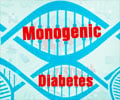FDA has issued warning against the use of SGLT2 inhibitors (Type 2 diabetes medication), as the drug correlates with the occurrence of diabetic ketoacidosis.

FDA issued Warning against the Use of SGLT 2 Inhibitors
Recently, FDA has issued warning against the use of SGLT2 (Sodium-Glucose Linked Transporter 2) inhibitors stating that case studies have reported an association between the use of SGLT 2 inhibitors and ketoacidosis. They are still trying to investigate the exact correlation between these diabetic medications and high amount of acid in the blood. FDA is also considering any changes that may be needed in the prescribing information of SGLT2 inhibitors.The report was initially presented at the annual meeting of the American Association of Clinical Endocrinologists. It stated that the use of SGLT 2 inhibitors can lead to the occurrence of diabetic ketoacidosis. FDA has reported almost 20 case reports of ketoacidosis mostly in patients with Type 2 diabetes. FDA reports mentioned that all the 20 cases of acidosis were reported as diabetic ketoacidosis, ketoacidosis or ketosis in patients undergoing type 2 diabetes treatment with SGLT 2 inhibitors and all the cases required hospitalization for treatment.
SGLT 2 Inhibitors in Type 2 Diabetes
SGLT2 inhibitors belong to a new family of Type 2 Diabetes drugs. SGLT 2 inhibitor act by making the kidneys to eliminate sugar through the urine. Their action is based on the blockade of glucose re-absorption pathways, which leads to glycosuria and eventual decrease in the glucose level in the blood in patients with Type 2 Diabetes. Their mechanism of action includes blocking of renal glucose re-absorption through the SGLT2 transport system. This results in accumulation of glucose, which is then eliminated through urine thereby reducing the glucose level in blood circulation. This also helps in lowering blood sugar levels and weight loss.US Food and Drug Administration has approved the use of SGLT2 inhibitors in the treatment of type 2 diabetes. SGLT 2 inhibitors are prescribed for patients with type 2 diabetes along with diet and exercise to lower glucose level in the blood. The use of these diabetic medications is beneficial for the newly diagnosed patients as well as those who have long-term diabetes.
What is Diabetic Ketoacidosis?
Diabetic ketoacidosis is reported to be a commonly occurring acute complication related with Type 2 Diabetes. It is a serious disease in which there is a production of high concentration of blood acids known as ketones. In case of diabetic ketoacidosis, the ketones in blood cause the loss of electrolytes via urine. Ketoacidosis develops when in the absence of adequate glucose levels in the blood; the body starts utilizing fat for energy production which produces ketones. The accumulation of ketones in blood makes the blood more acidic.In diabetic ketoacidosis, the diagnostic criteria includes blood glucose level>250 mg/dL, arterial pH<7.3, serum bicarbonate <15 mEq/L and a moderate case of ketonemia with or without ketonuria.
Signs and Symptoms of Diabetic Ketoacidosis
The signs and symptoms of diabetic ketoacidosis include breathing difficulty, nausea, vomiting, abdominal pain, confusion, unusual fatigue or sleepiness. If untreated, ketoacidosis can eventually develop in diabetic coma and death. The patient with severe acidosis may require hospitalization for treatment.The early symptoms of diabetic ketoacidosis include dry mouth, frequent urination, increased blood sugar levels and increased ketones in urine. In the later stages of ketoacidosis, the symptoms include constant fatigue, dry or flushed skin, nausea, vomiting, abdominal pain, breathing difficulty, fruity smell on breath and lack of ability to focus or pay attention. Diabetic ketoacidosis is a serious and fatal condition where the patient may enter diabetic coma and eventual death. If any of the signs and symptoms of ketoacidosis are detected, the patient should immediately contact the doctor.
Factors Triggering Diabetic Ketoacidosis
It was reported that patients who exhibited signs and symptoms of diabetic ketoacidosis had experienced some triggering factor. These triggering factors for acidosis include an acute disease or illness, recently occurred infection, urosepsis, trauma, decrease in the caloric or fluid intake or a decrease in the dose of insulin.Sodium-glucose linked transporter 2 inhibitors were reported to cause a severe case of ketoacidosis in various case studies. It has been suggested that the use of SGLT2 inhibitors is related with a high risk for developing ketoacidosis. Other factors which contributed to ketoacidosis in patients on SGLT 2 inhibitor class of type 2 diabetes drugs were hypovolemia, acute disease of the renal system, hypoxemia, and a history of alcohol use or a reduction in the oral intake of fluids or food.
What to do if Ketoacidosis is confirmed?
If the patients experience any of the warning signs such as nausea, vomiting, abdominal pain, breathing difficulty, confusion, tiredness or sleepiness then the clinicians should;- Evaluate them for the presence of acidosis
- Discontinue SGLT inhibitors if ketoacidosis is confirmed
- Rectify the acidosis and control blood sugar















